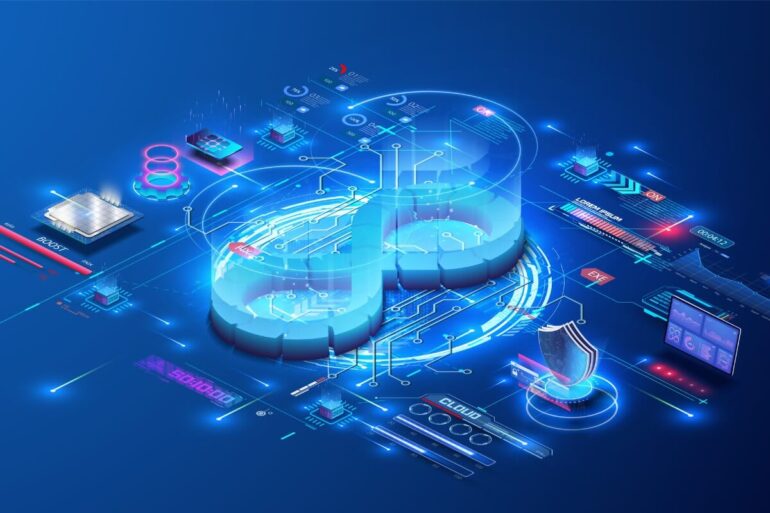In the ever-evolving landscape of DevOps, where speed, reliability, and continuous improvement are imperative, monitoring and observability stand as the guardians of software integrity. The synergy between these two aspects forms the bedrock upon which robust, scalable, and efficient systems are built.
In the following discourse, we unravel the intricate layers of monitoring and observability in DevOps, exploring the sophisticated tools and techniques that provide real-time software insights, enabling organizations to proactively address challenges, optimize performance, and deliver exceptional user experiences.
Understanding Monitoring and Observability

While monitoring and observability are often used interchangeably, they have nuanced differences. Monitoring typically involves tracking predefined metrics and events, providing a structured view of system health.
Observability, on the other hand, goes beyond this by enabling in-depth exploration and understanding of system behavior, allowing DevOps teams to ask ad-hoc questions about the system’s state. Together, they create a comprehensive view of the software environment, ensuring a proactive approach to system management.
In the ever-evolving landscape of DevOps, hiring skilled DevOps engineers becomes paramount, ensuring the adept implementation of advanced monitoring and observability techniques. Organizations can find proficient professionals for this task at https://lemon.io/hire-devops-engineers/, ensuring their systems are meticulously observed, optimized, and continuously enhanced.
Monitoring Tools
In the realm of monitoring, an array of sophisticated tools has emerged to provide real-time insights into system performance. Tools like Prometheus, Grafana, and Nagios offer comprehensive monitoring capabilities. Prometheus excels in collecting and storing metrics, while Grafana provides intuitive visualization and alerting.
Nagios, a stalwart in the monitoring domain, offers robust alerting functionalities, ensuring that anomalies are detected promptly. These tools form the backbone of continuous monitoring, enabling organizations to track metrics such as response times, error rates, and resource utilization in real-time.
Observability Techniques
Observability relies on techniques that enable DevOps teams to delve deep into the system’s behavior. Distributed tracing, a technique employed in microservices architectures, allows teams to trace requests across various services, identifying bottlenecks and latency issues.
Log aggregation, using tools like ELK Stack (Elasticsearch, Logstash, Kibana), consolidates logs from multiple sources, providing a centralized repository for analysis. Additionally, the integration of Application Performance Monitoring (APM) tools, such as New Relic and Datadog, offers detailed insights into application performance, code-level errors, and user interactions, enhancing observability.
Machine Learning and Predictive Analytics

The integration of machine learning algorithms and predictive analytics has revolutionized monitoring and observability.
Machine learning models can analyze historical data to predict potential issues, enabling proactive resolution before they impact users. Anomalous pattern detection, a common application of machine learning, identifies deviations from expected behavior, signaling potential problems.
Predictive analytics, fueled by historical data and machine learning algorithms, allows organizations to anticipate resource demands, plan scaling strategies, and optimize infrastructure proactively.
Challenges and Best Practices
Despite the advancements, monitoring and observability pose challenges. Overwhelming data volumes, diverse data formats, and the need for real-time analysis demand scalable and robust solutions.
Adopting best practices such as defining clear objectives, selecting appropriate metrics, and embracing a culture of collaboration between development and operations teams can mitigate these challenges. Utilizing cloud-based monitoring services and serverless architectures also streamlines data collection and analysis, ensuring agility and scalability.
Conclusion: Empowering DevOps Excellence

In the intricate tapestry of DevOps, where microseconds matter and user experiences define success, monitoring and observability emerge as the guardians of operational efficiency and user satisfaction.
The fusion of advanced tools, observability techniques, and predictive analytics creates a real-time window into the heart of complex systems, enabling organizations to preemptively address challenges, optimize resources, and enhance overall performance.
By embracing the power of monitoring and observability, DevOps teams embark on a transformative journey toward excellence, ensuring that every line of code, every transaction, and every user interaction is meticulously observed, analyzed, and optimized—a testament to the relentless pursuit of operational perfection in the digital age.
